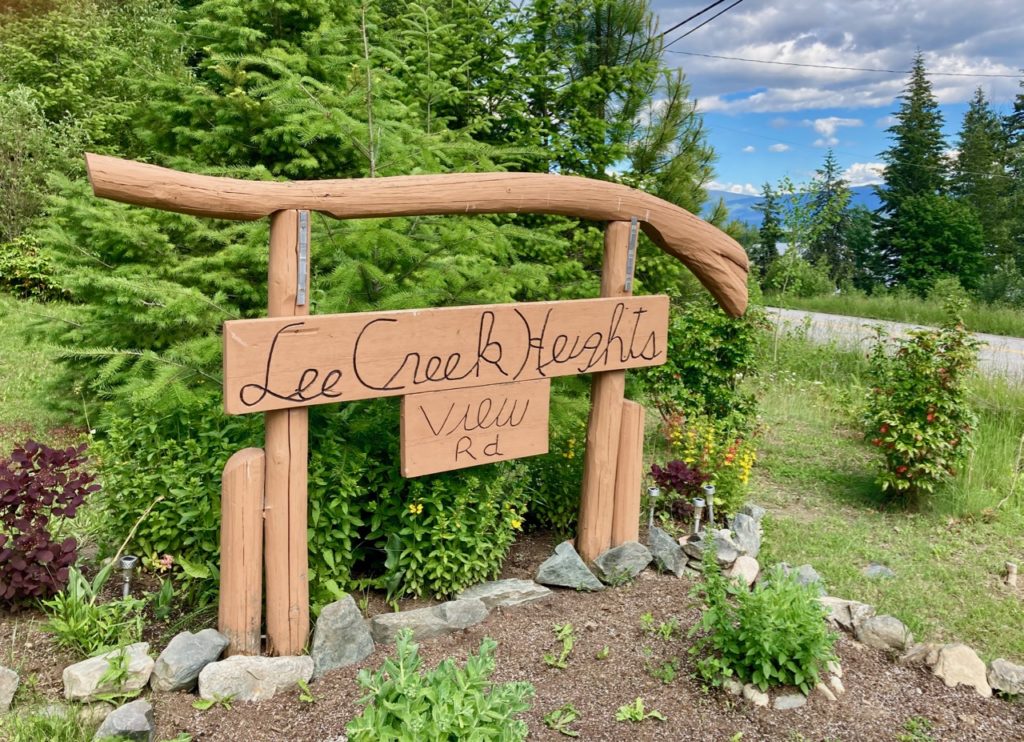
When we moved to Lee Creek in 1969 after driving our old truck and most of our possessions from Berkeley, California, the only person who lived nearby was Beatrice Riley. The wife of Will Riley an original Celista homesteader, Beatrice was a schoolteacher and a remarkable woman and could speak and write seven languages. She shared our pacificist worldview, was enamoured with Bertrand Russell, dreamed of travelling to China and owned the former homestead of James Freeman, who was the father of Oliver Freeman, the patriarch of Lee Creek.
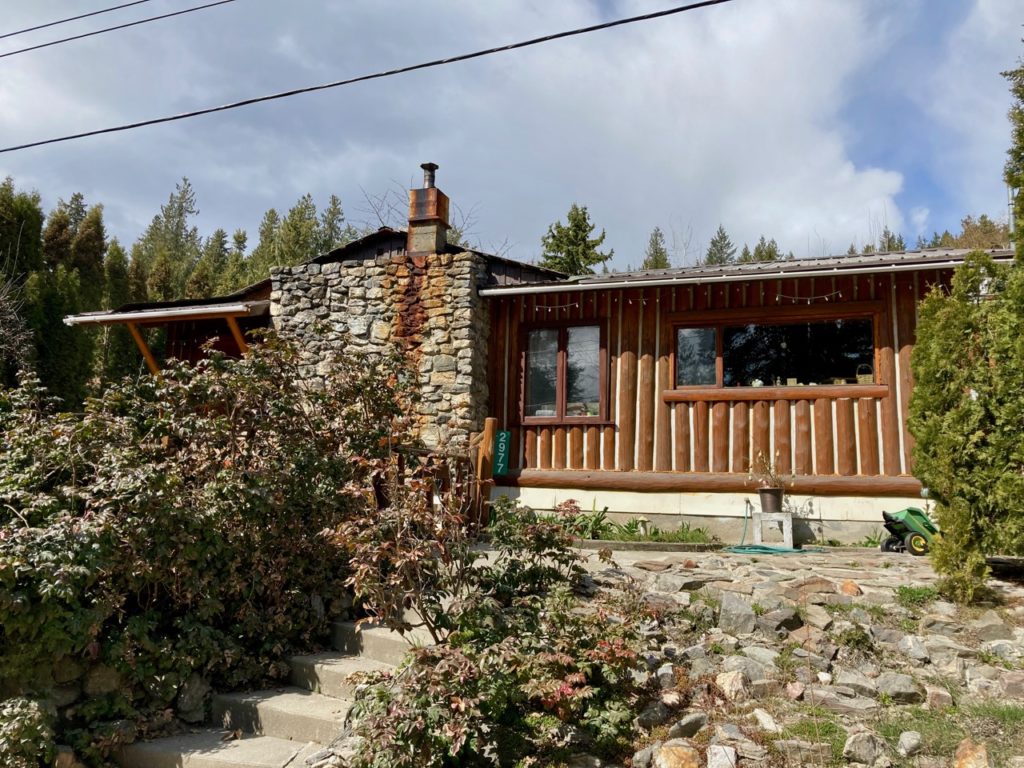
Beatrice lived near the highway in a vertical log cabin built by Emil Martinovsky, who arrived with his wife Eva after World War II and lived in a squared-timber house on the lake below Freeman Road. Emil owned a substantial amount of land in Lee Creek, had a sawmill above the Creek and built a number of timber cabins along the lake that remain today. Emil and Eva also became good friends of ours and I worked with him building a timber ore loading facility in the early 1970s for a mining company that was operating up on the Adams Plateau.
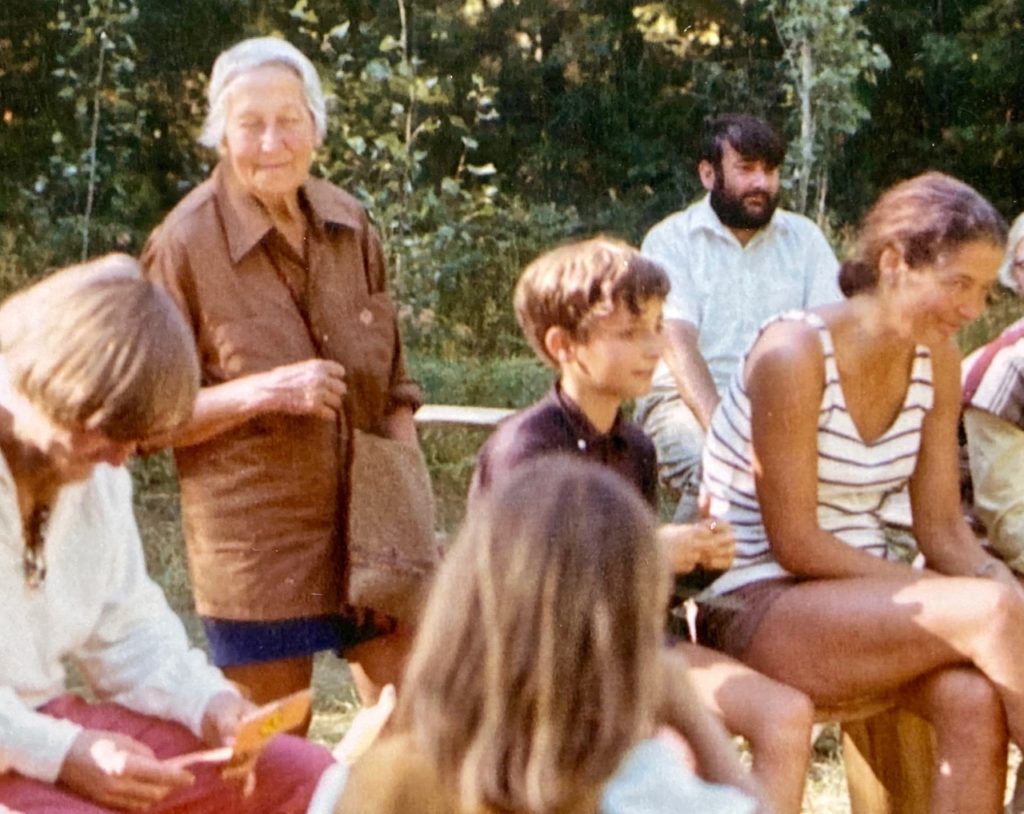
In May of 1971, Beatrice informed us that she sold the property to her son Mike’s company, Longview Developments, as she needed to move to Victoria to care for her daughter Ann who was ill with cancer. In the early 1970s, residential subdivision developments were just beginning around the Lake, as the Shuswap was becoming a popular place for vacation and retirement homes. Mike had recently developed Lucerne Estates just west of Anglemont and soon his bulldozer was carving out the hillside above Beatrice’s cabin.
Having fled city life to homestead in the “wilderness,” I was aghast to see the trees fall and the roads being built, knowing that houses and pavement would soon sprout up between us and the lake. We had been good friends with Mike, having enjoyed Christmas dinner with his family in 1970. That relationship soured when he and his major investor, Chase High School principal, Tom Campbell, arrived on July 9, 1973 with his plans to build a road through five acres of our property to access the upper bench of proposed development.
We also learned of his plans to block our only access with steel water tanks for the subdivision’s water system. At the time, our access was a forestry road that began at Freeman Road, which cut through Beatrice’s property and our property, and then carried up to the Adams Plateau. This road was likely built in the late 1940s and as was typical then, it did not have legal easements through both the private properties and the Indian Reserve. The Ministry of Forests was not pleased to see their road blocked, nor was BC Hydro as it was building the powerline from Mica Dam at this time, nor were the miners or our new neighbours who were in the process of homesteading the property above us.
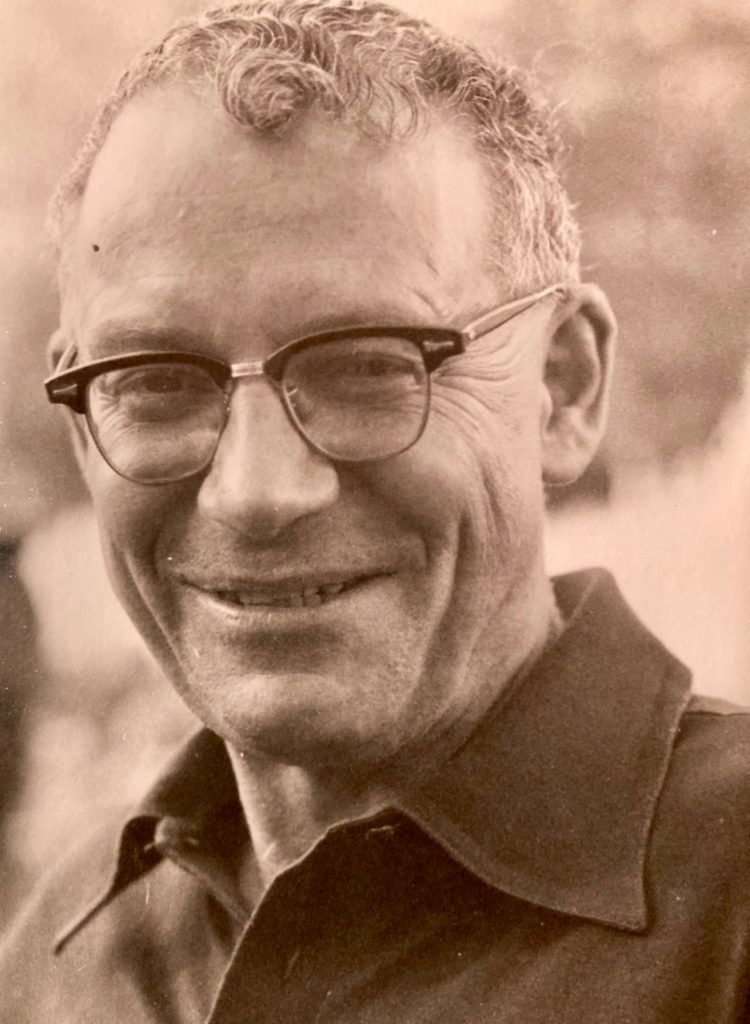
Mike presented us with plan that had been proposed by the forest service to build a massive road with two switchbacks that would take up the entire six acres of land we owned on the other side of the road and in return we would get a paved access and hydro. The alternative was no decent access. We attempted to get help from the government, but soon learned there was nothing they could do. At one point, the miners had a confrontation with Mike and tried to block his bulldozer, but of course they were no match with his powerful machine. After the tanks were installed, the only way we could drive into our properties was up a steep cat track along Mike’s property line we nicknamed “the ski jump.”
Eventually Mike built a new road around our property that joined the road through our neighbour’s land, which gave them access. We then either had to drive up the “ski jump” or park on the new dirt road and walk in. This road went through a new addition to the proposed subdivision, a property that Tom Campbell had purchased from Emil Martinovsky. Soon, Mike and Tom approached us with a new plan that would provide access to both of our properties. He only needed one acre, which was unusable wetland, and in return we would have a paved road and power. After being cut-off for over a year, there was no way we could turn it down and as soon as we signed the papers, Mike and I became good friends again.
POSTSCRIPT
When I first arrived in Lee Creek in 1968 to view the property where we live today, we drove up our old driveway with the realtor to find two shake-cutters squatting in the log cabin. On one side was a mound of shake trimmings and on the other side was a pile of their garbage. They had just boarded up the windows a few days earlier because a bear, attracted by the garbage, had tried to break in. The men had shot the bear and dumped the carcass in the ditch up the main logging road. I told the shake cutters that we had decided to purchase the land, but they were welcome to stay there that summer. On our way out, we stopped to view the carcass of the bear.
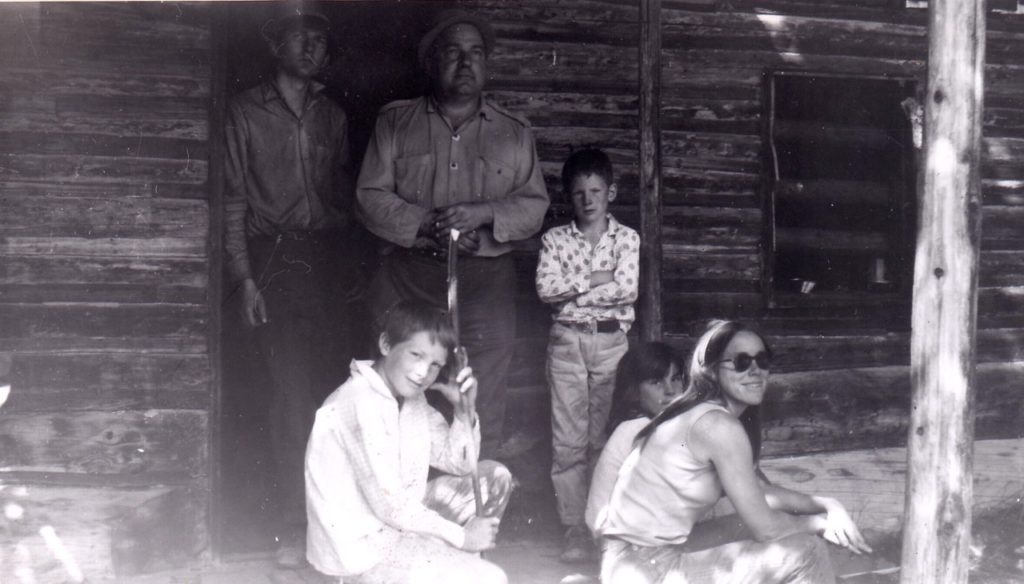
We moved to the property in April 1969 and lived in the cabin for many years. Life was rugged in those early days, with no electricity, no running water (we dug a well and had to haul the water) and in the winter we had to use our horses to get up and down the snowed in road to the highway. Farming was our early goal and we ended up feeding the bears and cougars with our goats and sheep! At first we socialized with the locals and attended square dances at the Cottonwoods and community dances at the Celista Hall where often there was a drunken brawl as part of the entertainment. When our neighbours arrived to homestead the land above us, parties and music nights filled our social calendar and we helped each other build our homes and clear the land.
After Mike began building the road through our property and we became good friends again, he helped me build our house. When the backhoe digging the hillside for the foundation hit bedrock, Mike lent me his compressor and rock hammer. After the holes were made, Mike’s sons, Frank and Al inserted the dynamite. Everyone showed up for the big blast and there was party afterwards. Later, Mike skidded the giant logs down to our property for building the basement. When there were parties on the hill, Mike often joined us as he became part of our social life in the early days.
Part Two will detail the three phases of the subdivision, including the many challenges the developers faced and the fate of the third phase.






